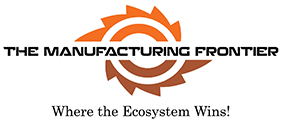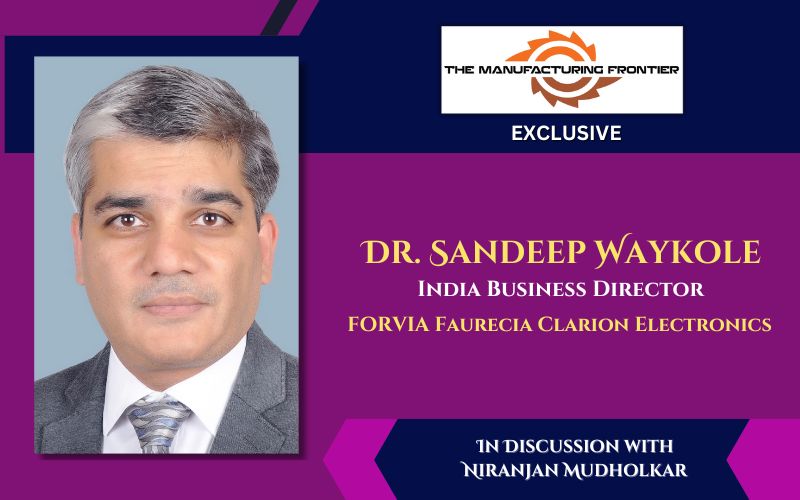“Of course, government initiatives like the PLI scheme and FAME policy are playing a vital role in encouraging domestic production and attracting component manufacturers by offering incentives and addressing import concerns. This is fostering growth in both domestic production and eventually, for the exports market.” Dr. Sandeep Waykole, India Business Director, FORVIA Faurecia Clarion Electronics
Can you give us an overview of the current state of the overall automotive electronics industry in India, and in the context of the current trends like ADAS, electrification, connected cars and so on?
The Indian automotive electronics market is experiencing rapid growth, driven significantly by advancements in the latest Chinese vehicles. Their technology and quality are pushing Indian OEMs to higher competency levels, as seen with models like the MG Hector. This trend is also reflected in the offerings of car makers like Kia and Hyundai. ADAS features, particularly surround view and driver monitoring systems, are gaining traction due to their relevance in Indian driving conditions and upcoming regulations.
Connected car technologies and IoT integration are also key trends. While the market is expanding, a major challenge lies in the potential entry of established Chinese automotive electronic platforms. These players already have their platforms ready. So, the Indian OEMs will have to develop their own platforms to compete effectively. Of course, government initiatives like the PLI scheme and FAME policy are playing a vital role in encouraging domestic production and attracting component manufacturers by offering incentives and addressing import concerns. This is fostering growth in both domestic production and eventually, for the exports market.

FORVIA Faurecia Clarion Electronics is a significant player in the automotive electronics market. How does your company position itself to capitalize on these emerging trends and remain competitive?
FORVIA Faurecia Clarion Electronics is strategically positioned to capitalize on India’s automotive electronics boom. Starting with infotainment systems, we have quickly achieved a significant market share with Maruti models. Our portfolio spans four key areas: cockpit electronics (infotainment, displays, etc.), ADAS (e-mirrors, driver monitoring, surround view and so on), software solutions (as product and as service), and commercial vehicle solutions (sensing, monitoring, fleet management, etc.).
In India, we are present in cockpit electronics and ADAS. Currently, we are not yet selling software as a product and commercial solutions in the Indian market. However, their development is happening here. In fact, we have a full-fledged Engineering Centre in Hinjewadi (Pune) where we are developing all our products both for the global market as well as for the Indian market. Our ‘Electronics Business Group’ contributes globally 15% of the total sales of US$ 27.2 billion and India contributes to 10% sales of the Electronics Business Group.
So, you can gauge the strategic importance of the India business for Forvia with its ‘West to East Transformation’ Strategy. Of course, this focus on local development and a comprehensive product portfolio positions us for continued growth in the Indian market.

What are your thoughts on the importance of sustainability within the automotive industry, and how is FORVIA Faurecia Clarion Electronics contributing to these efforts?
Firstly, let me emphasize that at Forvia, we are driven by sustainability. The automotive industry being an organized market, it is relatively easy to implement sustainability in this industry. All the key players, whether it is the OEMs or the Tier 1s, they are all focused on sustainability. Of course, there are a lot of regulations in the industry that demand sustainability even at the component level. So, there are regulations on the usage of plastic parts, metal parts as well as on electronics as well. When it comes to electronics, the key focus is on four aspects: 1. Using less components, 2. Making them more reliable, 3. Extending the life of electronic products, and 4. Emphasizing on the repairability of the products. When we talk about circular economy, we speak about reuse, repair, repurpose, refurbish and recycle. All these ‘Rs’ are now relevant to automotive electronics. And this is where the development cycle plays an important role. At FORVIA Faurecia Clarion Electronics, we have a very systematic process when it comes to the development cycle. We ask ourselves some important questions. What was the carbon footprint of the earlier product? What will be the carbon footprint when we deploy the new product? Is there a gap? So, if the carbon footprint of the earlier product was at ‘x’ then is it possible to have the carbon footprint of the next product at ‘x minus y’? Thus, we have to make that journey possible during the development cycle. Our focus is on less power consuming components, on modular design and the serviceability as well as repairability of the product. This is one of the major factors, which is lagging in the Indian automotive electronics industry.
Can you discuss the role of artificial intelligence (AI) and machine learning (ML) in the future of automotive electronics, and how FORVIA Faurecia Clarion Electronics is leveraging these technologies?
Adopting AI and ML is no more an option. It is essential for the future of automotive electronics, impacting both development and manufacturing. At FORVIA Faurecia Clarion Electronics, we recognize this imperative and are actively integrating these technologies into our processes. OEM demands, particularly for rapid turnaround times on customized solutions like infotainment systems, necessitate AI-driven platforms. These platforms leverage existing data and expertise to quickly generate tailored products, significantly reducing development time and cost. This is crucial for competing with the accelerated development cycles seen in markets like China, where products are often brought to market in as little as six months, compared to the longer development timelines traditionally seen in India. We are incorporating AI into our software development to minimize repetitive coding, and also into our manufacturing processes to drive efficiency and cost reduction. Furthermore, we are measuring the impact of AI/ML integration through performance assessments that track cost and time reductions achieved in new development projects. This data-driven approach allows us to demonstrate the value of these technologies and ensure our competitiveness in the global automotive electronics market. Adapting to this AI-driven landscape is not just a strategic choice; it’s essential for survival.

What are your predictions for the future of the in-car experience, and how will technologies like augmented reality and the metaverse shape the automotive landscape?
The in-car experience is evolving rapidly, moving beyond basic infotainment to a more integrated and personalized environment. We have incorporated apps like Microsoft Teams in our infotainment systems and software products, responding to OEM demand, particularly in Europe. Our ‘app in buying’ capability allows users to access and utilize various apps directly within the vehicle’s infotainment system, independent of a mobile phone connection. This enhances convenience and avoids the distraction of phone-dependent systems while driving. This allows for actions such as joining Teams meetings, making purchases, and even analyzing driver behaviour without being tethered to a mobile device. Looking ahead, head-up displays (HUDs) are poised to revolutionize driver interaction. Beyond simply replicating existing instrument panel data, future HUDs will provide real-time, contextually relevant information directly on the windshield. Imagine receiving alerts about traffic conditions, accidents ahead, or even tire pressure warnings seamlessly integrated into your field of view. This minimizes driver distraction and enhances safety. While current HUD implementations in India primarily replicate existing displays, the future lies in these intelligent, real-time warning systems projected onto the windshield, transforming the in-car experience.
How important is cybersecurity in the age of connected vehicles? What measures is FORVIA Faurecia Clarion Electronics taking to ensure the safety and security of its systems?
Yes, indeed. Cybersecurity is absolutely critical in today’s connected vehicle landscape. As vehicles become more and more integrated with the external world through Wi-Fi, internet connectivity, and over-the-air (OTA) updates, they become vulnerable to cyber threats. A recent challenge we faced in India highlights this: a product launched in 2019 now needs to comply with upcoming 2027 cybersecurity regulations. Adapting existing products with pre-defined hardware and software presents a significant hurdle, often requiring a new development cycle. At FORVIA Faurecia Clarion Electronics, we are addressing this challenge on multiple fronts. For existing products, we employ multi-layer filtering or multi-level calibration at the chip and software levels to detect and alert against potential threats when connected externally. For lower-end products, we offer the option of removing external connectivity altogether, providing a secure, cable-based connection for verification. These are interim solutions. Looking forward, all new products developed beyond 2027 will have integrated cybersecurity from the chip level, ensuring robust protection from the outset. This proactive approach is essential for safeguarding our systems and maintaining customer trust in the connected car era.

